- Resources
- Beyond leaders and laggards: The next chapter of corporate climate leadership
Resources
Beyond leaders and laggards: The next chapter of corporate climate leadership
Published: October 22, 2025 by Yael Wagner and Jane Eisenhardt , EDF
Over the past few months, several companies have made headlines for missing—or revisiting—their near-term climate targets. Rising energy demand, market volatility, and emerging technologies are forcing hard choices about how to stay on course. It’s raised a pressing question across the sustainability community: is business still on pace for net zero? The reality is more complex than success or failure.
Corporate climate performance is often framed in black and white: companies are either “leaders” or “laggards,” “on track” or “off” when in reality, progress is nuanced. The growing volume of self-reported climate data offers us a new wealth of untapped information showing not just what companies promise, but what they are actually doing. To see real progress, we must look beyond pledges to how companies are cutting emissions, where gaps remain, and where acceleration is possible.
Sustainability reports provide one of the clearest windows into this progress. While self-reported and uneven, they reveal how companies prioritize action, track key environmental indicators, and translate climate goals into operations. By analyzing this data, we can identify where meaningful progress is happening—and where support could help companies move faster.
To better understand which actions lead to real results, EDF analyzed reports from 127 large, publicly listed North American companies, together representing $22.5 trillion in market capitalization (18% of the global total) and nearly ten percent of global private sector emissions. While not a definitive account of outcomes, this analysis offers a snapshot of what companies say they are doing and how they frame their progress—helping us assess the current state of voluntary action.
Closing the “Action Gap” is within reach
Too often, companies are evaluated in binary terms: either “on track” or “off track.” This lens oversimplifies reality and limits accountability. Our research shows that being “off track” does not necessarily mean a company is falling behind.
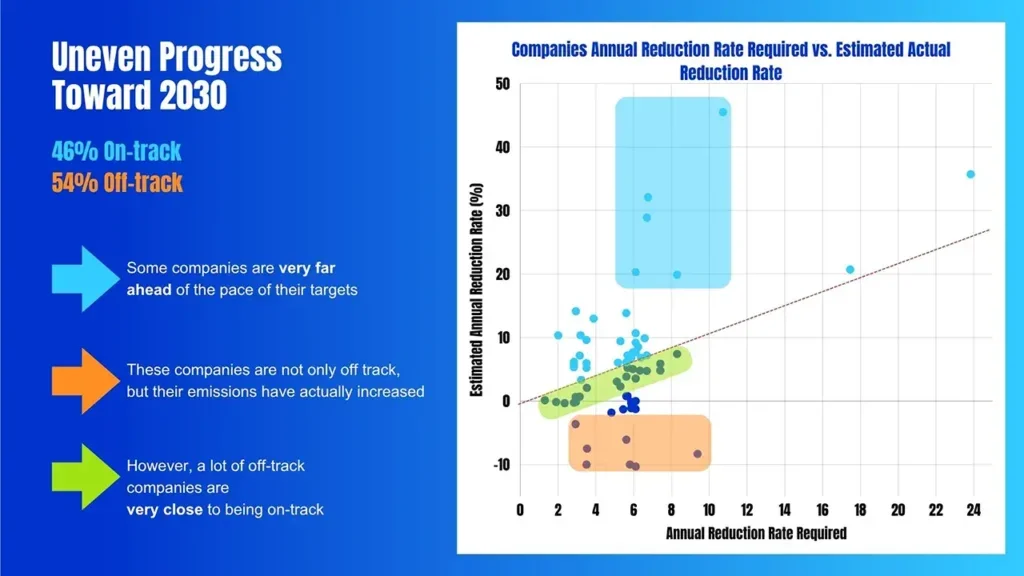
Nearly half (46%) of companies in our sample report being on track to meet their climate targets. At first glance, this commitment-to-action gap seems daunting. But a closer look shows that many of the so-called “off-track” companies are actually close to alignment. In fact, 34% are within just three percentage points of being on track—suggesting that with targeted support, investment, and accountability, they could close the gap quickly.
High integrity targets should focus action where it matters most
However, even the term “on track” can be misleading. Targets do not always capture the full picture of emissions reductions. For example, in our sample many companies are ahead on Scope 1 and 2 emissions but lagging on Scope 3—the majority of the private sector’s carbon footprint.
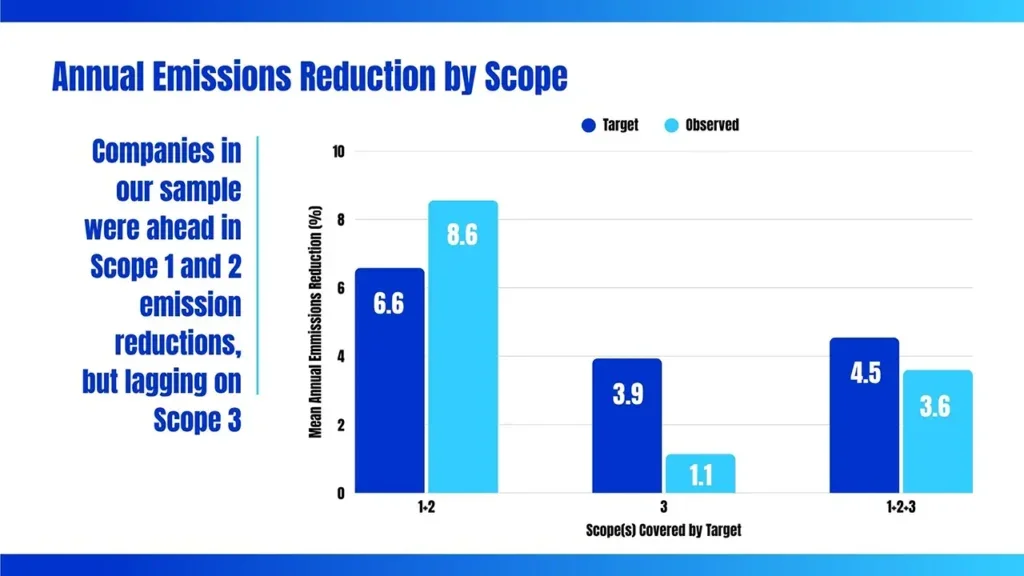
This distinction matters: Scope 3 emissions make up the majority of the private sector’s carbon footprint. In our sample alone, Scope 3 accounts for 90.3% of reported emissions—underscoring the need for companies to make deeper progress where it matters most.
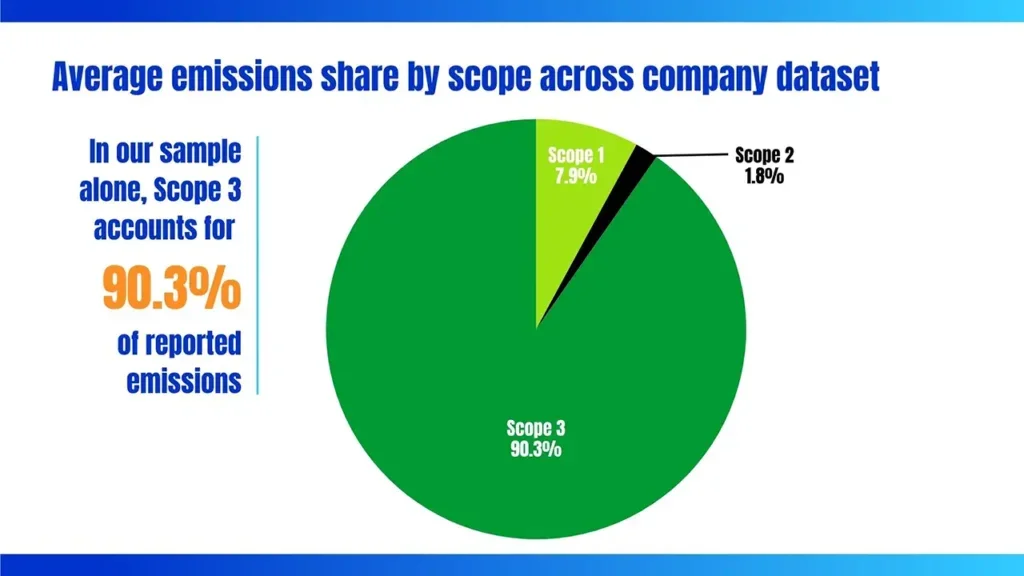
Sustainability reports are filled with actions companies say they are taking—but the impact of those actions varies widely. Not every initiative contributes equally to emissions reductions, and some of the most transformative measures remain underused. Understanding this nuance is essential: actions like supplier engagement or internal carbon pricing can have far greater long-term impact than more visible but less material efforts. Recognizing these differences helps us identify where change is actually happening.
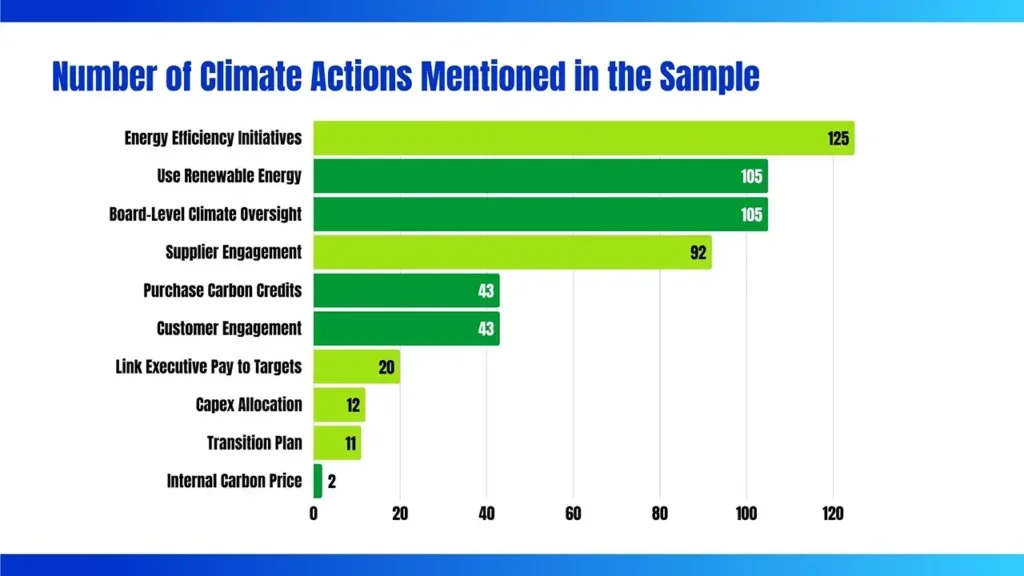
One clear standout from our data is transition plans. Our data showed that companies that disclose plans are far more likely to report emissions reductions across all scopes.
Transition plans are action-oriented roadmaps for companies to follow as they proceed on their climate goals, extending beyond just paperwork to signal whether climate goals are embedded in operations rather than siloed in sustainability teams. Supporting and requiring these plans could accelerate meaningful progress across the board.
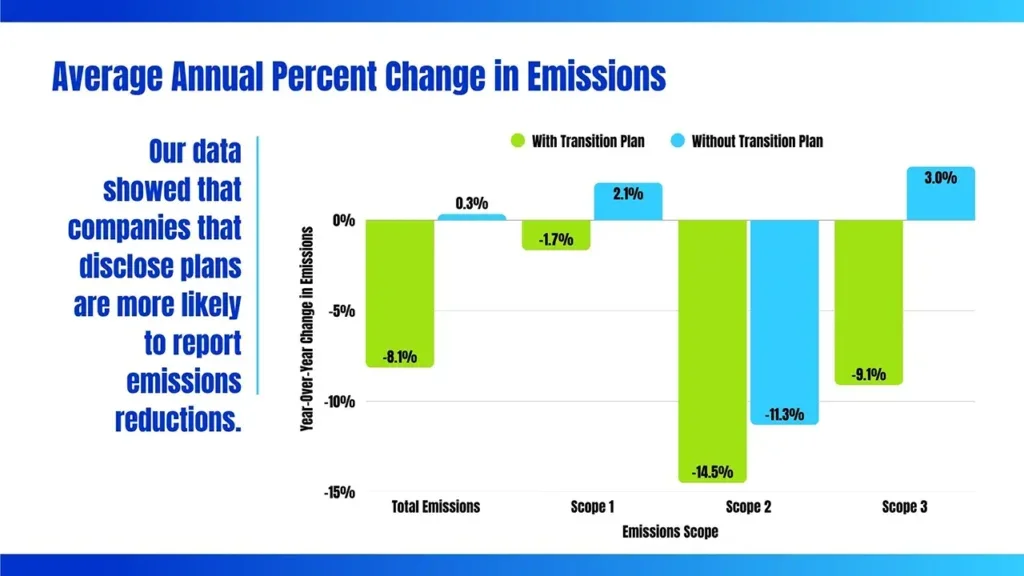
Another common tendency is to sort companies into ‘leaders’ or ‘laggards. However, while our analysis showed that not all companies are leaders, it also showed that most are not inactive, either. A sizable “movable middle” sits just shy of alignment. This group holds enormous potential: with the right mix of financing, policy frameworks, and technical assistance, they could advance quickly, shifting the overall distribution of corporate progress.
Action where it matters
As global emissions continue to rise, the path to a stable climate depends on rapid, measurable reductions. Companies have a critical role to play, yet translating their ambition into real-world impact is rarely straightforward.
Without nuanced measurement and accountability, we risk valuing ambition over tangible impact. True leadership is demonstrated not by pledges, but by results that drive meaningful, sustainable change. As the world looks toward COP30, widely seen as the “implementation COP”, the future of corporate climate leadership will increasingly be measured by tons rather than targets.
EDF encourages sustainability leaders to get started acting where they have the most influence to drive emission reductions at scale, whether that be through clean energy demand, sustainable procurement strategies, or measuring and tracking emissions. For more resources on getting started today, visit EDF’s Net Zero Action Accelerator.

-
Net Zero Action AcceleratorLearn More
-
Actionable Insights for a Decarbonizing WorldLearn More



